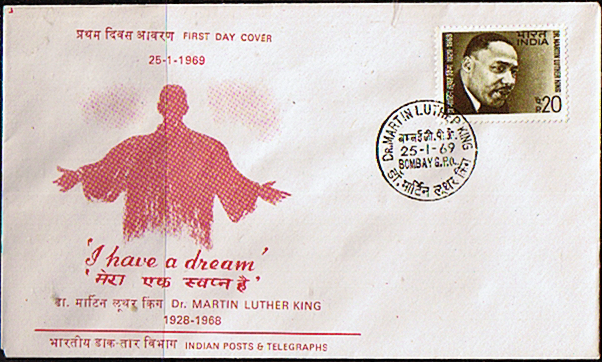Mr. Henning informs me that the Sanskrit & Tibetan is forthcoming in Dhīḥ:
Edward Henning & Vijayarāja Vajrācārya. ‘Kālacakrāvatāra of Abhayākaragupta’. kalacakra.org, 2013 [pre-press draft of Sanskrit edition].
Mr. Henning informs me that the Sanskrit & Tibetan is forthcoming in Dhīḥ:
Edward Henning & Vijayarāja Vajrācārya. ‘Kālacakrāvatāra of Abhayākaragupta’. kalacakra.org, 2013 [pre-press draft of Sanskrit edition].
Seishi Karashima. ‘Was the Aṣṭasāhasrikā Prajñāpāramitā Compiled in Gandhāra in Gāndhārī?’ Annual Report of the International Research Institute for Advanced Buddhology (ARIRIAB) at Soka University for the Academic Year 2012, vol.XVI, 2013, pp.171–188. [PDF]
This is a remarkable piece of detective work and a milestone in the study of the Mahāyāna, whether or not one thinks (as I do) that Prof. Karashima’s theory nails it. Karashima’s many years of lexicographical toil seem to have finally paid off: the earliest Chinese phonetic transcriptions from the Aṣṭasāhasrikā agree most fully with the newly found Gāndhārī fragments (for which see also Strauch 2007). And that, moreover, is merely one of many compelling indicators pointing to the composition of the text in Gandhāra.
One minor comment: the image of Dharmodgata discovering the Prajñāpāramitā written on gold plates vilīnena vaidūryeṇa — in “melted” lapis, according to Karashima (p.181) — sounds excessively fantastic. The reference is to lapis lazuli pigment, well known to medievalists as ultramarine, ‘beyond the sea’ — i.e., from Afghanistan.
Martin Luther King, Jr. ‘The Chief Characteristics and Doctrines of Mahayana Buddhism’. Term paper, Crozer Theological Seminary, 28 April 1950. [via official site: The King Papers Project at Stanford U.]

Judit Törzsök. ‘The alphabet goddess Mātṛkā in some early śaiva Tantras’. Second International Workshop on Early Tantra, 2009. [PDF]
Martin Delhey. ‘The Textual Sources of the Mañjuśriyamūlakalpa (Mañjuśrīmūlakalpa), With Special Reference to Its Early Nepalese Witness NGMPP A39/4′. Journal of the Nepal Research Centre* vol.14, 2012, pp.55–75. ISSN 2091-0401 [downloadable with restricted access at academia.edu].
Continue reading “Delhey, Textual Sources of the Mañjuśriyamūlakalpa (2012)”
Zhen Liu (刘震). ‘On the Sanskrit Version of Dharmadhātustava‘. Paper presented at Buddhajayanti: The Celebration of 2600 Years of Buddha’s Enlightenment, Mahachulalongkorn University, Bangkok, 2012. [PDF]
Dr. Zhen Liu tracks down the earliest dateable source for the Dharmadhātustava — a Chinese translation of preaching attributed to Kṣitigarbha, surviving in a unique Dunhuang manuscript — and concludes: “it is obvious that before the middle of the eighth century it was not thought that Nāgārjuna authored the text” (p.10).
Continue reading “Liu, On the Sanskrit Version of Dharmadhātustava (2012)”
李学竹 〈《入中论颂》第六章1一97颂校勘〉 《中国藏学》 1, 2012. (ISSN 1671-6043)
Li, Xuezhu. ‘Madhyamakāvatāra-kārikā’. China Tibetology no.1, 2012, pp.1–16.
Slightly late news, but then this publication doesn’t seem to have been mentioned anywhere else (or brought to my attention) by anyone named in the acknowledgements. That isn’t too surprising, though. One of the three other publications mentioned by the author is an edition of Vasubandhu’s “Viṃśatikākārikā” (p.2), yet one of the nominal collaborators has established back in 2008 that this text should properly be titled Viṃśikā.
Continue reading “Li, Madhyamakāvatāra 6.1–97 (2012)”
Bill Mak [Mak Mànbīu 麦 文彪]. ‘Ratnaketu-parivarta, Sūryagarbha-parivarta and Candragarbha-parivarta of Mahāsaṃnipātasūtra (MSN) – Indian Jyotiṣa through the lens of Chinese Buddhist Canon’. Presented at the “Sanskrit and Science” Panel, 15th World Sanskrit Conference, New Delhi, 8 January 2012 [via Kyoto Erasmus Program: PDF].
Nice to see some respect for Mañjuśrī in a journal on Indian Logic:
Rolf W. Giebel. ‘The One Hundred and Eight Names of Mañjuśrī: The Sanskrit Version of the Mañjuśrīkumārabhūta-aṣṭottaraśatakanāma Based on Sino-Japanese Sources’. Indian Logic 3 [インド論理学研究 第Ⅲ号], 2011 [平成23 年11 月30 日], pp.303–345.
Continue reading “Giebel, ‘The 108 Names of Mañjuśrī’ (2011)”